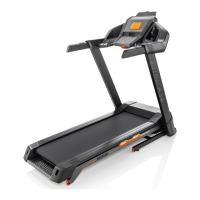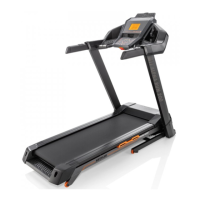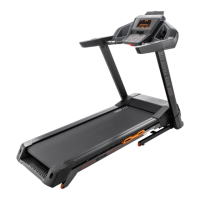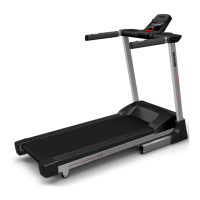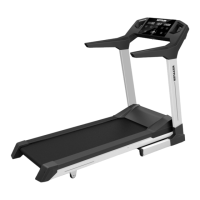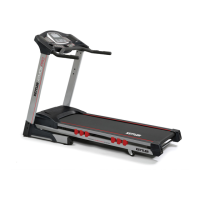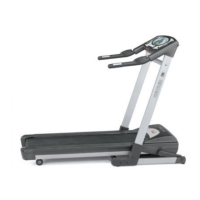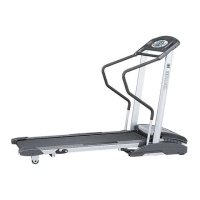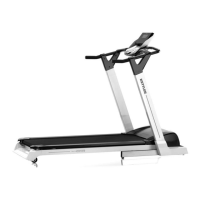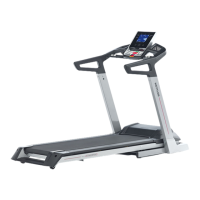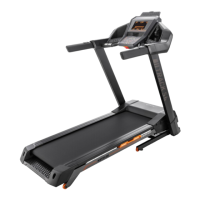Biomechanics Treadmill |
Scope of Physical Exertion
Duration of a training unit and its frequency per week:
The optimum exercise range is 65-75% of the cardiovascular performance over a longer
period.
At the beginning of each training session, you should spend 3-5 minutes warming up with a slowly
increasing level of exertion to bring your cardiovascular system and your muscles to the right tempe-
rature.
Just as important is the so-called - After each workout you should continue running slowly
for about 2-3 minutes. Initially, the exertion level for your further endurance training should basically be
increased by means of the scope of physical effort, e.g., training takes place 20 minutes daily instead of
0 minutes, or three times a week instead of twice a week. In addition to the individual planning of your
endurance training, you can also use the training programmes integrated into the training
computer.
1. Biomechanics - Treadmill
1.1 Training Form and Movement Execution
On the treadmill, various forms of training can be used -- from walking, to power walking, to sprinting.
The movement execution of walking, power walking, running, and sprinting is divided into four phases:
Notes / Motion Description
Support leg under
the body9s centre of the foot
gravity
Here the maximum knee stroke takes
place and serves mainly for the forward
swing of the leg. When the foot makes
contact with the ground, the lower extre-
mities are cushioned by a passive braking
movement within 10 - 20 ms.
Front Suppor- Touchdown of the
Vertical posture When the foot touches down, forces are
generated that represent 2-3 times the
weight of the body. It is therefore import-
ant to wear the right footwear to adequa-
tely absorb the shock impact and to ensu-
re a healthy pronation of the foot.
Propulsion with In the nal phase, the foot is stretched out
and propulsion takes place via the rst
toe.
Propulsion with the Vertical posture
foot
